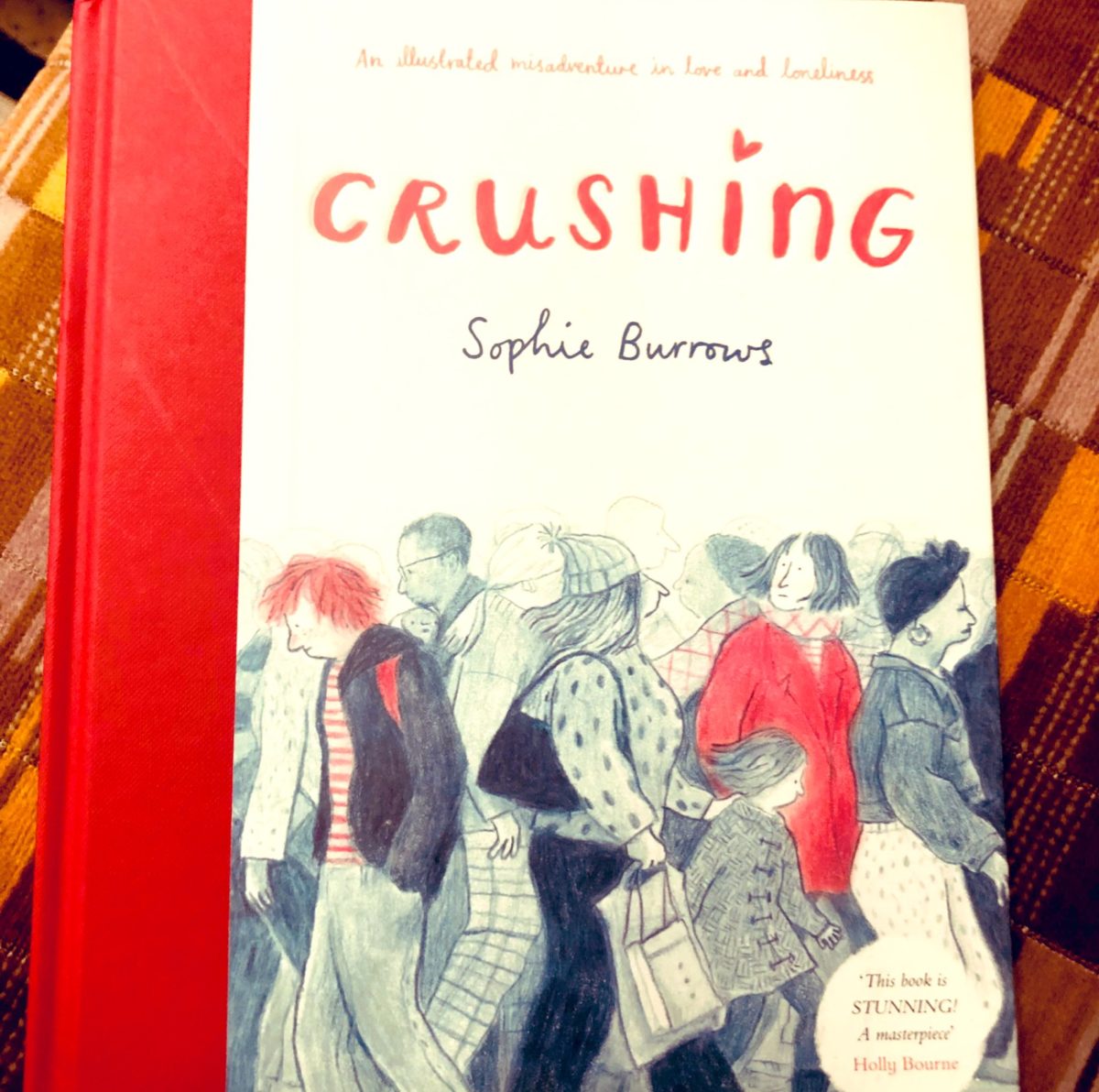Crushing by Sophie Burrows is a wordless graphic novel: in place of text, it contains illustrations that bring to mind the warm humour of Raymond Briggs interspersed with moments reminiscent of the melancholic solitude of Edward Hopper: the disparity entices the reader; draws you in; makes you reflect on pained times of loneliness but also the joys of serendipitous connections that occur in large cities, like stars against a dark morass.
This is a work not based entirely on imagination, but forged in part by conversations between Burrows and the team on a research project Pathologies of Solitude, 18th – 21st Century, which the author credits as having “helped shape [her] own understanding of solitude and loneliness and in turn, this story”. The project comprises researchers from across the humanities, and the social and medical sciences, as well as clinicians, campaigners and policy advisors.
This research is self-evident, threaded through the narrative of the book: in one scene, the protagonist glimpses an advert carrying a glib motto – we, the readers, know that the motto imparts personal significance to the character, in their hour of adversity. The coldness of the corporate advert runs starkly against Burrows’ warm depiction of the indefatigable human spirit. In another scene, a character enters a London pub: just outside the door, a homeless person lies in a sleeping bag, while pigeons peck at a discarded carton of chicken wings. Characters pass a while on a park bench reading magazines that appeal little to them; they watch as others enjoy moments of friendship and connection which render their own solitude all the more apparent; they search for work and struggle to find meaning in what Burrows comically depicts as nonsensical street marketing jobs jostling with a host of demanding and implacable passers-by.
It’s an endearing work; one that asks the question: are we lonely living in cities? and responds to it to say yes, sometimes – let us help each other.
CulturAll had the opportunity to ask Sophie Burrows a couple of questions about her work and favourite artists:
Is there an artist you feel the world should know more about?
There are so many! If I must only choose one; I adore the work of illustrator Becky Palmer (@_beckypalmer) and could stare at her drawings for hours. Every line she draws on the page just feels as though it is squirming with life- she captures something really special with her work.
Sophie Burrows
What advantages do graphic novels have over, say, novels, in terms of portraying emotions such as loneliness?
I think there are advantages and disadvantages to each medium. But for me, it was about using drawing to explore emotions that can often be difficult to express in words. Through using images alone, a lot of the ‘inner dialogue’ is left unsaid, but sometimes I think that can be advantageous. I like to think that a certain amount of ambiguity means that the reader is left some space to put themselves in that situation and relate to the situation closely, reflecting on the emotions through their own perspective.
Sophie Burrows
Through illustration, I was able to draw situations and create environments that emphasised the emotions of each character, and using colour played a big part in that too. I think with graphic novels, you can include all of these little details too that might be considered over descriptive if it were a written novel. I was able to feed my readers visual clues that I hope led them to understand the feelings that the characters were experiencing, and how they changed throughout the book.
Crushing by Sophie Burrows is available from David Fickling Books from November 2021. Burrows completed an MA in Children’s Book illustration at Cambridge School of Art. She won the V&A Student Illustrator of the Year Award in 2019. Her debut picture book as an author/illustrator, IG PIG AND OG FROG!, was published in 2020.

